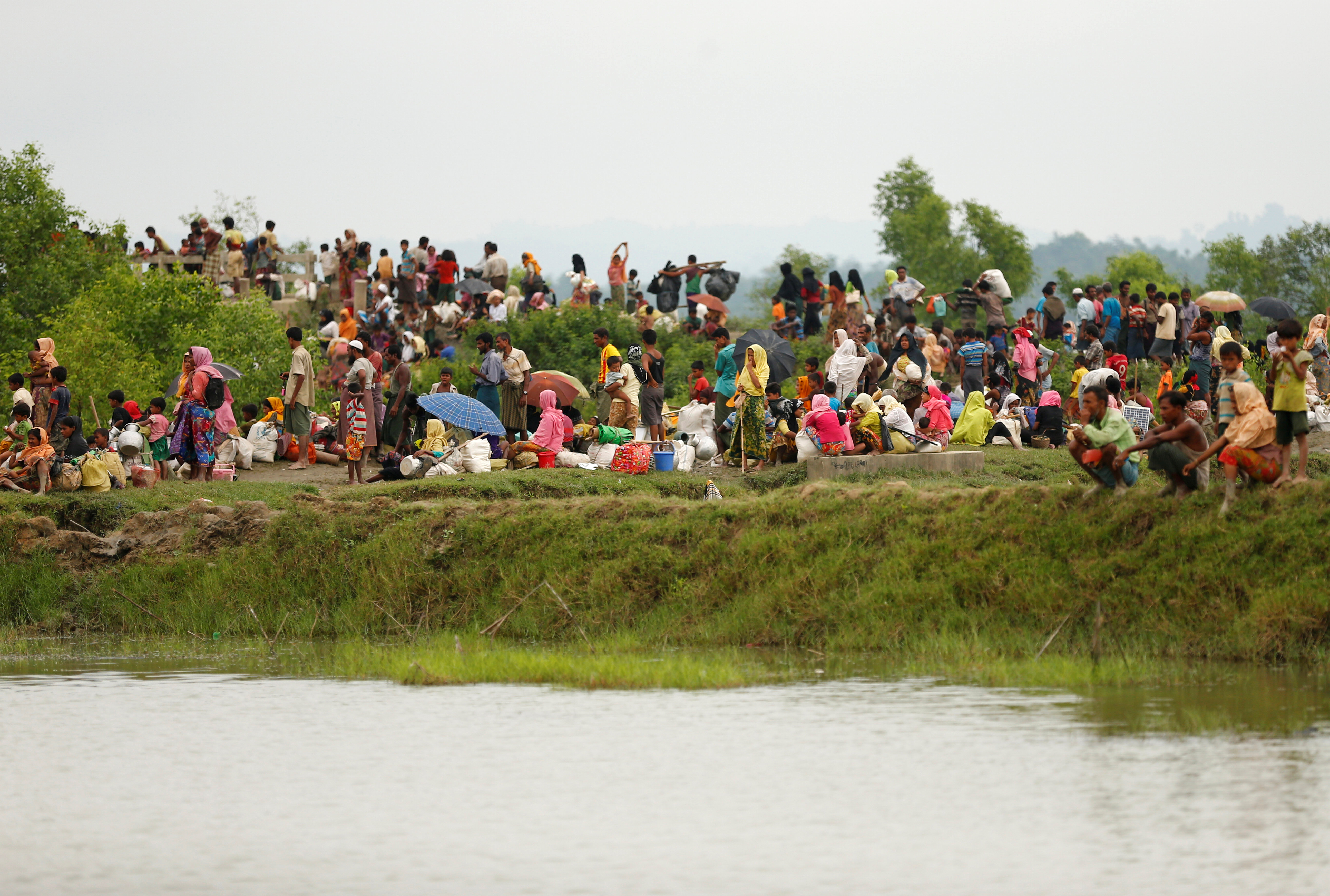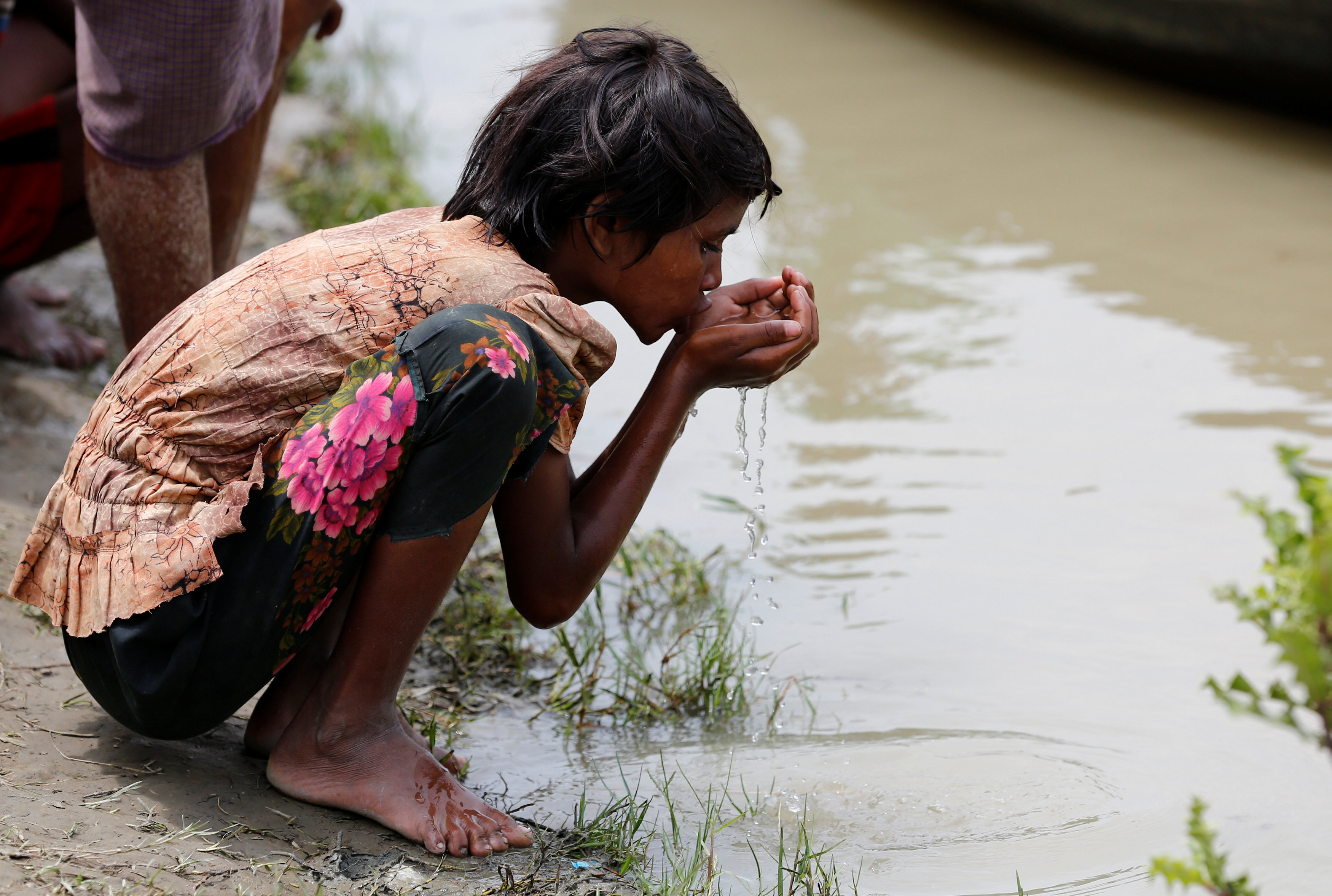
By Krishna N. Das
COX’S BAZAR, Bangladesh (Reuters) – An alarming and unprecedented influx of 270,000 Rohingya has sought refuge in Bangladesh over the past two weeks from violence in Myanmar, the U.N. refugee agency said on Friday, a dramatic jump in the total as new pockets of people are found.
A rights group said satellite images showed about 450 buildings had been burned down in a Myanmar border town largely inhabited by Rohingya, as part of what the refugees say is a concerted effort to expel members of the Muslim minority.
Vivian Tan, a spokeswoman for the U.N. High Commissioner for Refugees, said the estimated number of Rohingya who fled to Bangladesh since violence erupted on Aug. 25 had surged from 164,000 on Thursday because aid workers doing a survey had found big groups of uncounted people in border areas.
“This does not necessarily reflect fresh arrivals within the past 24 hours but that we have identified more people in different areas that we were not aware of,” she said, adding that the number was an estimate and there could be some double-counting.
But she added: “The numbers are so alarming – it really means that we have to step up our response and that the situation in Myanmar has to be addressed urgently.”
The surge in the number of refugees, many sick or wounded, has strained the resources of aid agencies and communities which are already helping hundreds of thousands displaced by previous waves of violence in Myanmar. Many have no shelter, and aid agencies are racing to provide clean water, sanitation and food.
Two days ago, UNHCR had said the worst-case scenario was 300,000 refugees.
“We need to prepare for many more to come, I am afraid,” said Shinni Kubo, the Bangladesh country manager for the agency. “We need huge financial resources. This is unprecedented. This is dramatic. It will continue for weeks and weeks.”
Rohingya have been fleeing their homes in Myanmar since at least 400 people were killed after insurgent attacks in Rakhine State two weeks ago were followed by an army counter-offensive.
Myanmar says its security forces are fighting a legitimate campaign against “terrorists” it blames for a string of attacks on police posts and for burning homes and civilian deaths.
It says about 30,000 non-Muslims have been displaced by the violence.
About 1.1 million Rohingya Muslims living in Myanmar have long complained of persecution and are seen by many in the Buddhist-majority country as illegal migrants from Bangladesh.
“While most Rohingya refugees arrive on foot, mostly walking through the jungle and mountains for several days, thousands are braving long and risky voyages across the rough seas of the Bay of Bengal,” the UNHCR said.
At least 300 boats arrived in Cox’s Bazar on Wednesday, the International Organisation for Migration said.
BURNED BUILDINGS
U.S.-based Human Rights Watch said satellite images taken last Saturday showed hundreds of burned buildings in Maungdaw, a district capital in Rakhine State, in areas primarily inhabited by Rohingya.
“The Burmese government has an obligation to protect everyone in the country, but if safety cannot even be found in area capitals, then no place may be safe,” said Phil Robertson, the deputy Asia director at Human Rights Watch said in a statement.
Several thousand people held a protest in Dhaka, the Bangladesh capital, after Friday prayers against the crackdown on the Rohingya.
Similar protests were held in Indonesia and Malaysia, also Muslim-majority countries. Scores of people also staged protests outside the Myanmar embassies in Tokyo and Manila.
Malaysian Prime Minister Najib Razak said he was considering raising the Rohingya issue when he holds talks with U.S. President Donald Trump next week.
Earlier, the head of Malaysia’s coastguard said it would not turn away Rohingya and was willing to provide them temporary shelter, although it is unlikely any refugees would travel hundreds of kilometers south by sea during the monsoon season.
Najib told reporters the Rohingya issue had to be resolved “at the source”.
“It is unfair for affected parties to inflict more cost to Malaysia to manage and to receive these people when they should be allowed fundamental and universal rights that have been denied to them,” he said.
(Additional reporting by Kanupriya Kapoor in Jakarta, Rozanna Latiff in Kuala Lumpur and Tom Miles in Geneva; Writing by Raju Gopalakrishnan; Editing by Robert Birsel)










